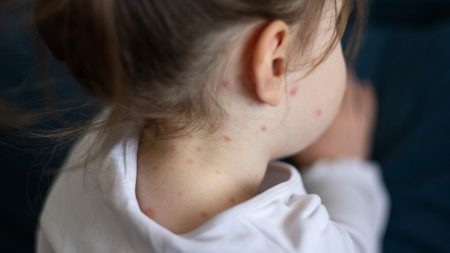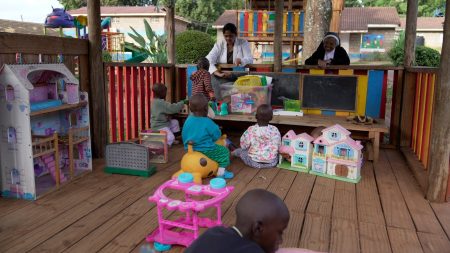The Impact of Long COVID on Children: A Growing Concern
Long COVID, a condition characterized by persistent symptoms lasting at least three months after a COVID-19 infection, has been a well-documented issue among adults. However, its impact on children has remained less understood—until now. According to new federal data published in 2023, more than 1 million children in the U.S. may have been affected by long COVID. This startling figure highlights the need to prioritize the health and well-being of children as the world continues to grapple with the aftermath of the pandemic.
The data, derived from the 2023 National Health Interview Survey (NHIS), provides a nationwide snapshot of the health of the U.S. population. Researchers from the Centers for Disease Control and Prevention (CDC) analyzed responses from parents and guardians, focusing on children aged 17 and under. The survey revealed that approximately 1.01 million children, or 1.4% of the pediatric population, are believed to have experienced long COVID at some point as of 2023. Furthermore, about 293,000 children, or 0.4%, were still experiencing symptoms at the time of the survey. These numbers align closely with previous estimates from 2022, which suggested that around 1.3% of children had ever experienced long COVID.
Risk Factors and Demographic Disparities in Long COVID Among Children
The study also shed light on key demographic factors that influence the likelihood of developing long COVID. Children aged 12 to 17 were found to be the most affected group, both in terms of having ever experienced long COVID and currently living with the condition. This could be due to a combination of factors, including higher exposure to the virus, differences in symptom reporting, and the timing of infections relative to vaccination efforts.
In addition to age, racial and ethnic disparities emerged as significant predictors of long COVID prevalence. Hispanic and non-Hispanic white children were more likely to experience long COVID compared to non-Hispanic Black and Asian children. These disparities may be linked to broader socioeconomic factors, such as access to healthcare, environmental exposures, and vaccination rates. The study also found that long COVID was more common among children from families with incomes below $100,000 and whose parents had an education level of an associate’s degree or less. These findings underscore the intersectionality of health and socioeconomic status, even among children.
The Toll of Long COVID on Children’s Daily Lives
One of the most concerning aspects of long COVID in children is its impact on their daily lives. Among those experiencing long COVID at the time of the survey, a striking 80% reported some level of activity limitation compared to their pre-COVID lives. This includes disruptions to school attendance, extracurricular activities, and overall quality of life. The authors of the study emphasize the need to better understand the severity of these limitations, as well as the long-term functional outcomes for affected children. For many families, long COVID has become a persistent challenge that extends far beyond the initial infection.
The study also highlights the potential under-reporting of long COVID among younger children. Unlike adolescents, who may be more adept at articulating their symptoms, younger children often struggle to verbalize their experiences. This could lead to delays in diagnosis and treatment, exacerbating the long-term effects of the condition. As a result, pediatricians and caregivers must remain vigilant in monitoring for signs of long COVID, even in children who may not be able to fully describe their symptoms.
The Ongoing Mystery of Long COVID’s Causes
Despite its growing recognition, the exact mechanisms behind long COVID remain poorly understood. Researchers have identified several risk factors, including severe initial illness, underlying health conditions, and lack of vaccination. However, even individuals with mild or asymptomatic infections can develop long COVID, leaving scientists searching for answers. Emerging theories suggest that hormonal changes, such as lower cortisol and testosterone levels, may play a role. Another hypothesis is that remnants of the virus could persist in the body, triggering prolonged inflammation and symptoms.
The CDC has noted that unvaccinated individuals are at a higher risk of developing long COVID, emphasizing the importance of vaccination as a preventive measure. However, the development of long COVID is not entirely predictable, and much remains to be learned about its causes and progression. This uncertainty underscores the need for continued research into the condition, particularly in pediatric populations.
Moving Forward: Supporting Children with Long COVID
As the data on long COVID in children continues to grow, so too does the urgency to address its impact on young lives. Families, healthcare providers, and policymakers must work together to ensure that affected children receive the support they need. This includes access to specialized care, accommodations in school settings, and mental health resources to cope with the emotional and psychological toll of chronic illness.
The findings from the NHIS serve as a call to action, highlighting the need for further research and targeted interventions. By understanding the scope and severity of long COVID in children, we can take meaningful steps to mitigate its effects and help young people thrive in the years to come. The pandemic may be waning, but its legacy in the form of long COVID reminds us that the fight for children’s health is far from over.















